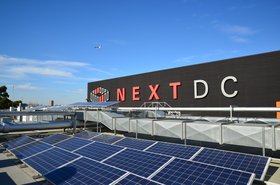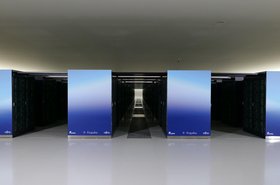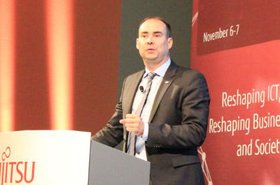By design, cloud computing services and the data centers in which they run have the potential to be more environmentally friendly than the onsite IT infrastructure they are intended to replace. Economies of scale make it possible for data center operators to provide companies with the same IT services that used to run on corporate servers, while reducing energy consumption significantly.
According to a report by Pike Research, it was estimated that, by this year, cloud computing could have helped cut the global IT carbon footprint by as much as 38 percent. However, these figures depended on the creation of highly efficient data centers, so the question is this: Are we providing these energy-efficient data centers, or have we lost sight of our environmental responsibilities?
Creating sustainable data centers through energy-efficient design
The large-scale migration of business data and IT services to the cloud has accelerated the need for more sustainable data centers. As companies move their corporate IT infrastructures – either partially or wholly – to the cloud in ever-increasing numbers, it is imperative that traditional and hyperscale data center operators follow efficient design and operating principles.
If we take a look at the latest figures, we can see that while traditional data centers have decreased energy usage by nearly 50 percent over the last six years, hyperscale data centers are now using twice as much energy as they were in 2015.
Unfortunately, without the ability to analyse this data at a more granular level, it’s impossible to say whether these figures simply reflect the growth of hyperscale data centers or whether such data centers are inherently less efficient than their traditional counterparts. The main driving factor is almost certainly increased demand but there may be some reticence among hyperscale data center operators with regard to the adoption of environmentally-friendly practices.
What we do know is this: if the latest efficiency improvements in data center hardware and infrastructure continues apace, it should be possible to accommodate a 60 percent increase in demand for both traditional and hyperscale data center services over the next 12 months, without an accompanying increase in the energy they consume. But in order to achieve this feat, it is imperative that data center operators follow energy-efficient design principles.
Energy-efficient data centers are cool
Cooling technology solutions are a key component of energy-efficient data centers, as reflected in the energy savings that Fujitsu was recently able to achieve in two of its Australian data centers. By optimising airflow and reconfiguring CRAC units, following the analysis of environmental data collected by wireless sensors, a 48% reduction in energy consumption was achieved.
The electricity saved by the measures that Fujitsu implemented was equivalent to the annual energy consumption of 350 average households so it’s not difficult to imagine the potential for significant energy and cost savings that cooling technology has to offer. Perhaps the most exciting point to note about this particular exercise in efficiency improvements is that the results were achieved through configuration changes to existing hardware alone, i.e. there was no need to install any additional components in order to realise the cost and energy savings.
On the subject of cost savings, in this particular case, the reduced energy consumption led to a saving of $230,000 on annual electricity usage, across just two data centers in Australia.
Waste: a toxic subject that needs to be prioritised
The potential energy savings that cooling solutions have to offer are very encouraging, but the outlook is less positive as far as toxic waste is concerned. E-waste accounts for 70 percent of all toxic waste in the US and there’s little reason to believe the figures are more compelling in the rest of the developed world.
A Supermicro survey of more than 5,000 data center professionals in 2019 discovered that the number of organisations partnering with certified recycling companies had fallen by 14 percent in the previous 12 months, and that the number of organisations recycling their own hardware had dropped by five percent during the same time. These are not trends that the industry should be proud of. The potential for improvement in this area needs to be prioritised. The same study estimated that global e-waste could be reduced by as much as 80 percent through the optimisation of hardware refresh cycles by data center operators.
The way forward
If we are to create truly green data centers that provide tangible benefits for the environment, we need to take a rigorous, holistic approach to the design and operation of data centers that address cooling, energy consumption and waste. There are three essential factors that need to be considered as cloud migration continues to become more commonplace:
- Energy-efficient servers – Installing servers designed with minimal power consumption in mind.
- More effective cooling solutions – Reconfiguring existing systems based on the analysis of collected environmental data.
- Optimised hardware refresh cycles – Reducing toxic waste through life cycle assessment and refresh cycle optimisation of all data centers hardware components.
If we focus on these key areas, we can achieve, or even exceed, the predicted reduction in the carbon footprint of the global IT industry that cloud computing has made possible.
More...
-

Australia's NextDC and Fujitsu pledge to go carbon-neutral
Both use Qantas' offsetting scheme to make first zero-carbon colo offers in Australia
-

Japan's Arm-powered Fugaku named world's fastest supercomputer
Topping Top500 list of most powerful systems in the world
-

Fujitsu to expand Western Sydney data center
Eventually bringing the facility to 90MW


